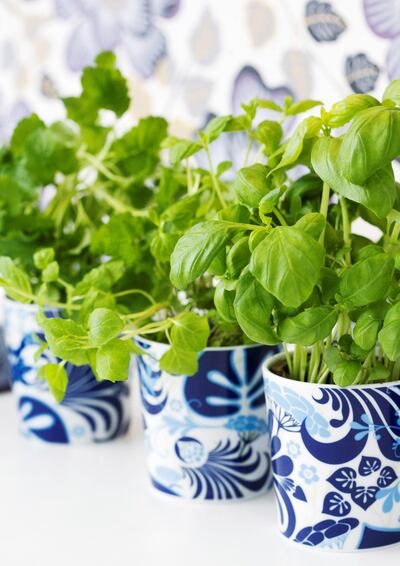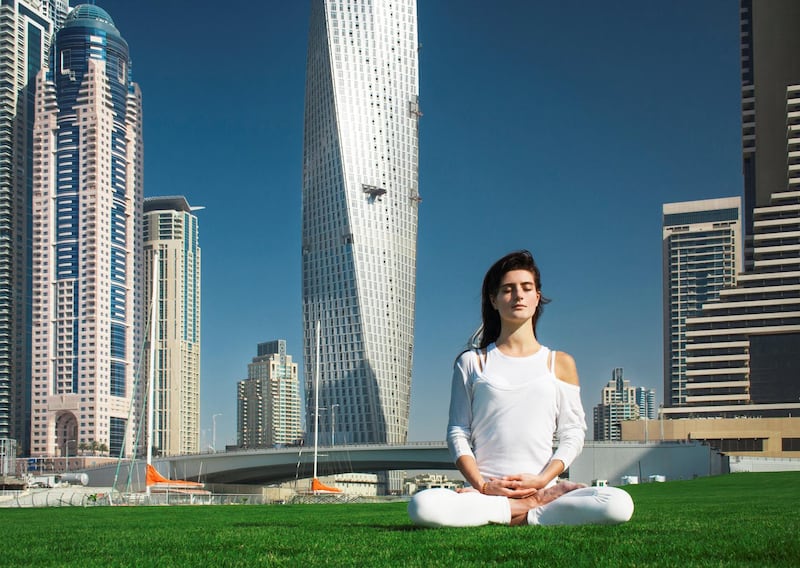"Raised in a tiny village under a vast sky, I was unprepared for urban life," reads the introduction to Lucy Anna Scott's book, Mindful Thoughts for City Dwellers. This is a sentiment many of us will share when fresh to a new city: feeling like tiny inconsequential ants in a vast scape of skyscrapers and grey apartment blocks.
This tiny pocket book has been written as a meditative guide to adapting to and living happily in urban settings. After all, Scott makes the point that as the world’s big cities expand to become even greater, we are all headed for adoption into the great metropolis.
“Ecologists have found that the concentration of populations and use of mass transport decreases human encroachment on natural habitats, while the apartments we live in are more energy efficient than detached suburban houses,” Scott continues. Home Sapiens are adapting to big city life and soon enough, it may well actually be better for the planet for us to live in a city, but why do so many of us still struggle with stress and anxiety in our new urban worlds?
“Like many urbanites I know, living in the city is often a real compromise,” explains Scott. “You can get so much out of being part of a thriving metropolis, but feel deprived in terms of time and space and nature.”
How cities can be taxing
When choosing to live in the city, we give up space and often the great expanse of green that our species had been used to before the industrial revolution. In the grand scheme of our history on the planet, we’re just starting to get used to living in urban settings.
What can be even more taxing on our mental wellbeing is moving between metropolises. “I think moving to any new city in the world and starting your life again from scratch can push you to your limits in terms of stress,” says Tia Hall Davis, who recently moved to Dubai from the UK. “It’s the uncertainty that comes with it all - starting a new job in a new region, finding a new place to live and making new friends can all take time and really does challenge you mentally and emotionally in so many ways.”
Living in a city can bring on all sorts of anxieties – from the big to the banal. In order to deal with them and for difficult situations, we disconnect from our emotions: going into autopilot to ‘get through’ our day. “In a sense, we disconnect from both our environment and ourselves to avoid the discomfort of a crowded subway station or the anxiety of a fast-paced workplace,” says Peter Freedman from top-grossing mindfulness app Calm.
He explains that when we do this we’re actually cutting ourselves off from the insights needed to look after ourselves. “It’s not uncommon for people to notice a headache at the end of their workday because it’s the first time they’ve taken a moment to check in with their body,” says Freedman, offering ‘mindfulness’ as a solution to this all-too-common problem.
‘Mindfulness’ - a term that has slowly seeped into our common vernacular - is quite simply being aware of the present moment. “It is when one makes a conscious choice to switch off auto-pilot mode and become more aware of one's thoughts, emotions and bodily sensations, as well as all what is happening in their surrounding environment,” says Madeeha Afridi, Counselling Psychologist at The LightHouse Wellbeing Centre.
It’s noticing the colour of the evening sky, or the feel of the soles of your feet on the pavement as you walk. To be mindful is to be fully engaged with this moment – neither hanging on to moments that have passed or worrying about things in the future (be it the meeting you have scheduled in five minutes time or your long-term life plans).
Top tips for urban mindfulness
How then, do we go about applying mindfulness to our big city lives? All the experts we spoke with are in agreement that we don’t need to attend expensive retreats or book ourselves in for spa treatments to begin to relax in our urban surrounds. It may sound simple (and in truth, it is) but all we need to do to begin to adopt a mindful approach is to breathe in those big, deep breaths that ease our tense bodies into a state of relaxation. Essentially, meditation is the answer.
“What’s revolutionary about meditation is that instead of feeding stress by doing more or speeding up, we do the opposite. We slow down and focus on our breath,” says Freedman at Calm. “After we’ve started to calm down a little, we can observe those stressful feelings and thoughts without getting swept up in them. With regular practice, eventually, our brains actually change,” he continues, explaining that meditation can help us face our stressful cosmopolitan lives with ease. The advice is to find a regular slot each day to take ten minutes to connect with your body and breathe. Using a guided meditation app like Calm is a great option if you’re new to the practice.
Scott goes a step further by offering inventive mindfulness practice so that we can truly enjoy our urban lives, and not just ‘cope’ with them. “Adopt a tree,” she says, explaining that finding a tree and nurturing it by watering it once a week can help us feel more connected to nature. She also advises on the calm and restorative effect of water on the human mind, so if parks and forests are not an option, a beach and water that expands to the horizon can have the same effect on an overworked mind.
“In simple, small ways we are able to feel hopeful that the city is not a crushing human jungle,” she says of her mindful hacks. Other tips from Scott’s book include taking a nighttime walk to discover a different perspective of the city, watching birds fly and “discovering wildness” by looking at the city as you might view nature. Have you, for example, climbed to the top of a skyscraper as you might have a mountain, to marvel at the view from the top?

Scott also recommends cultivating an urban garden – be it plants indoors or even a herb garden that you grow in your kitchen and use in your cooking as a way of connecting more to the natural world (“sniffing the leaves at the end of a long and stressful day is deeply therapeutic”). “A happy mindful existence comes from using your senses to engage with the environment, growing plants, noticing the seasons, noticing the moon, being possession-light and living consciously,” she says.
Whatever it is that works for you, adopting a mindful approach to the every day could be just what is needed for truly living in our urban worlds. “Improved memory, concentration, cognitive ability, a healthier connection with the body, better sleeping patterns, weight management, pain management, reduction in stress and anxiety, emotional regulation, and an overall positive affect on health and sense of wellbeing,” are the results of regular mindfulness practice, says psychologist Afridi.
Time for some deep breaths then.
_________________
Read more:
These books will help encourage mindfulness in your children
Let it go, already: how to deal with emotional baggage
Mental first aid coming to the rescue in Dubai
_________________











